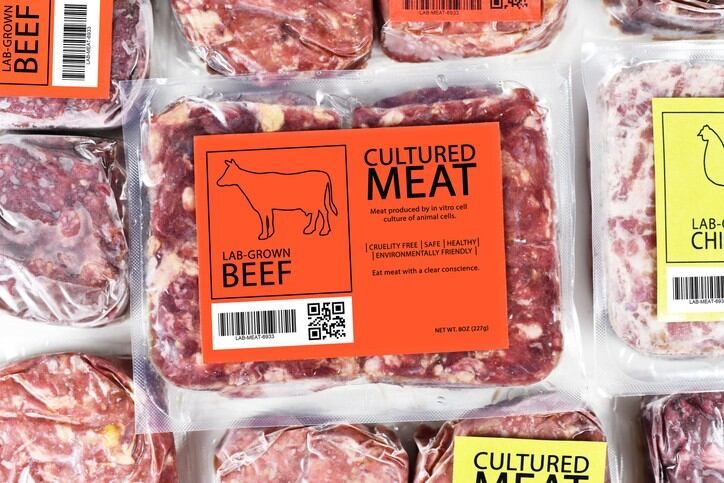This was the consensus reached by an expert panel on scaling cultivated meat production in the Asia Pacific region which convened at the recent Cellular Agriculture: Asia Summit 2021.
The panel comprised of: Founder of cultivated meat technology firm Heuros N.J. Beaumont, Founder and Chief Executive of nanotech firm Cellivate Technologies Viknish Krishnan-Kutty, Co-Founder and CEO of cultivated red meat firm Gaia Foods Vinayaka Srinivas and Founder of cultivated meat cuts firm Ant Innovate Hanry Yu. The session was moderated by Cellular Agriculture Australia Founder and Executive Director Dr Bianca Le.
Much of the panel’s discussion was focused on IP protection as a major challenge faced by the industry today when it comes to collaborations and sharing knowledge, especially as the vast majority of firms in the cultivated meat space are still in the start-up stage.
According to Beaumont, collaborations are undoubtedly crucial to helping the entire cultivated meat industry progress and scale up, but without safeguards in place to protect each firm’s unique technology, sharing is more difficult that it would be otherwise.
“It is necessary for firms to ensure that their IP and knowhow is protected in any collaboration or discussion, especially when in touch with larger corporations – it is things like these that need to be further considered when developing any network of companies working together [in this sector],” he said.
“It would be helpful to have some sort of body to streamline initiatives in this space, [but] it is slightly difficult here in the Pacific and Asia as there are so many countries around so there is a need to think about which jurisdiction will legislate legal agreements [and other issues].”
Krishnan-Kutty concurred, adding that the establishment of such an entity would increase the level of safety firms feel when it comes to collaborating, which would ensure better sharing and thus faster scaling up.
“Some kind of non-biased entity which puts governance and restrictions down would be ideal so that start-ups can feel safe in working with each other, knowing their data and IP is protected,” he said.
“A system like that in place would mean more sharing in the community which would help accelerate the whole field a lot faster.”
Yu added that at this stage, collaborations are smoother when it comes to thinking of B2C and end-products, but things are particularly dicey when it comes to collaborations that are higher up the supply chain.
“There are collaborations both upstream and downstream – end-product collabs are usually downstream and mean dealing with the food industry, [these are] easier in terms of protection as there are steps like filing patents, establishing SOPs, signing contracts,” he said.
“But any upstream collaborations, for example with bioreactor companies or when it comes to public-private relationships are tricky [and] obviously a lot of thought is needed to take care of things like conflict of interest, data protection, corporate governance issues and more.”
Public perception
When it comes to science communication and engaging with consumers about the public perception of cultivated meat, the panel agreed that this is important to bring transparency about the sector, but focus will depend on the stage that the company has reached with its technology and products.
“It’s all about what stage the firm is at. At this stage, [firms like ours are] developing new tech and we need to protect this, so there is a need to be more guarded [with what is shared with the public] – but as soon as we can go public, such as when patents have been launched, then it is our duty to explain and bring transparency to sector,” said Beaumont.
“For that to happen, there is a need to provide consumers with info [that cannot be released right now], but this will happen in the near future.”
Yu concurred, adding that things need to be more mature’ before trying to release information tothe public about the technology behind cultivated meat.
“It is important to handle this carefully and for things to be mature enough before communicating with the public, otherwise we may do more harm than good for the industry,” he said.
“At present, there is a lot of hype about the industry but not enough substance. [There is] a lot of general publishing on short, conceptual, preliminary data, but not enough substance that can stand up to scrutinty by serious scientific enquiries.
“We need to see more papers published in serious journals, [and are] looking for more serious scientific research data in this space. [I do] believe that there is a large body of literature and a community of serious scientists that have been in various [related] disciplines for decades, but the bulk of these serious people not even entered the cultivated meat field yet. ”
Srinivas on the other hand described the importance of any messaging being layman-suitable for consumers to understand the sector and dispel myths behind the production of cultivated meat.
“We have seen firms like Monsanto develop a technology but feel it is not their duty to educate consumers, and now the whole GM vs non-GM debate is as huge if not huger than the climate issue [so education must not be neglected],” he said.
“In Israel, [cultivated meat firm SuperMeat] has a test kitchen next to its production facility where consumers can see where the food they are eating is from, and so dispels myths about ‘Frankenstein’ or other lab-grown fears.
“These are the sorts of tangible things that can make people more comfortable with the technology but unfortunately at present we don’t have that sort of [resources] so we’re doing more of inviting people to labs, [making sure the terms we use to describe our tech] are simpler and understandable, and showing people how things happen, step by step.”





